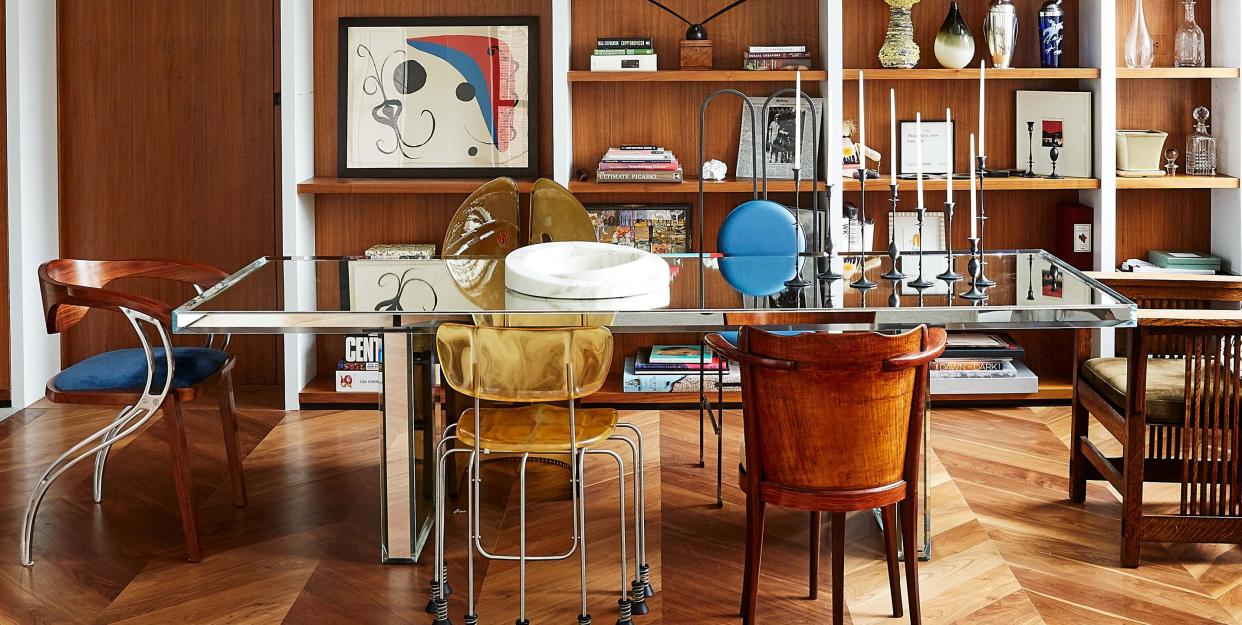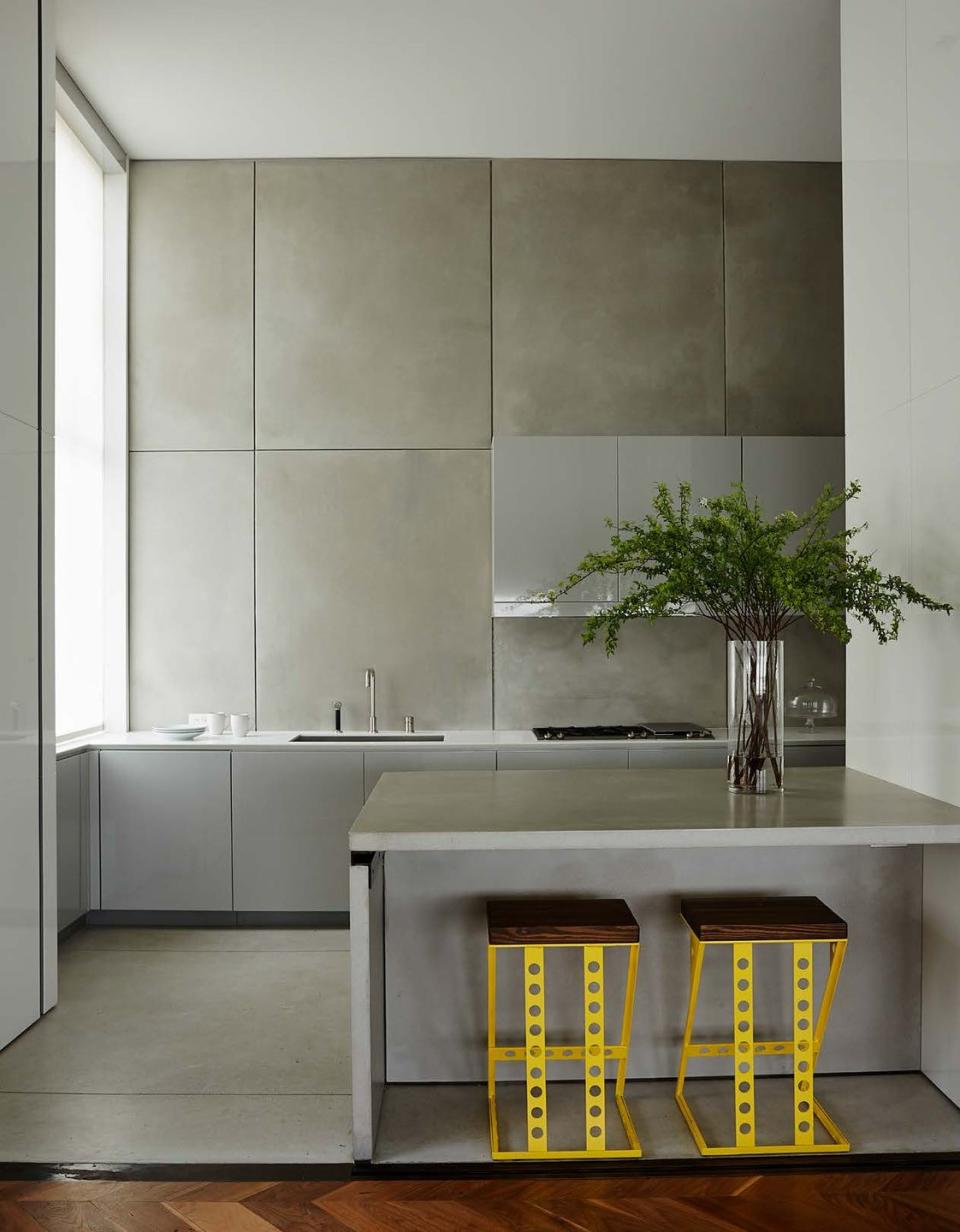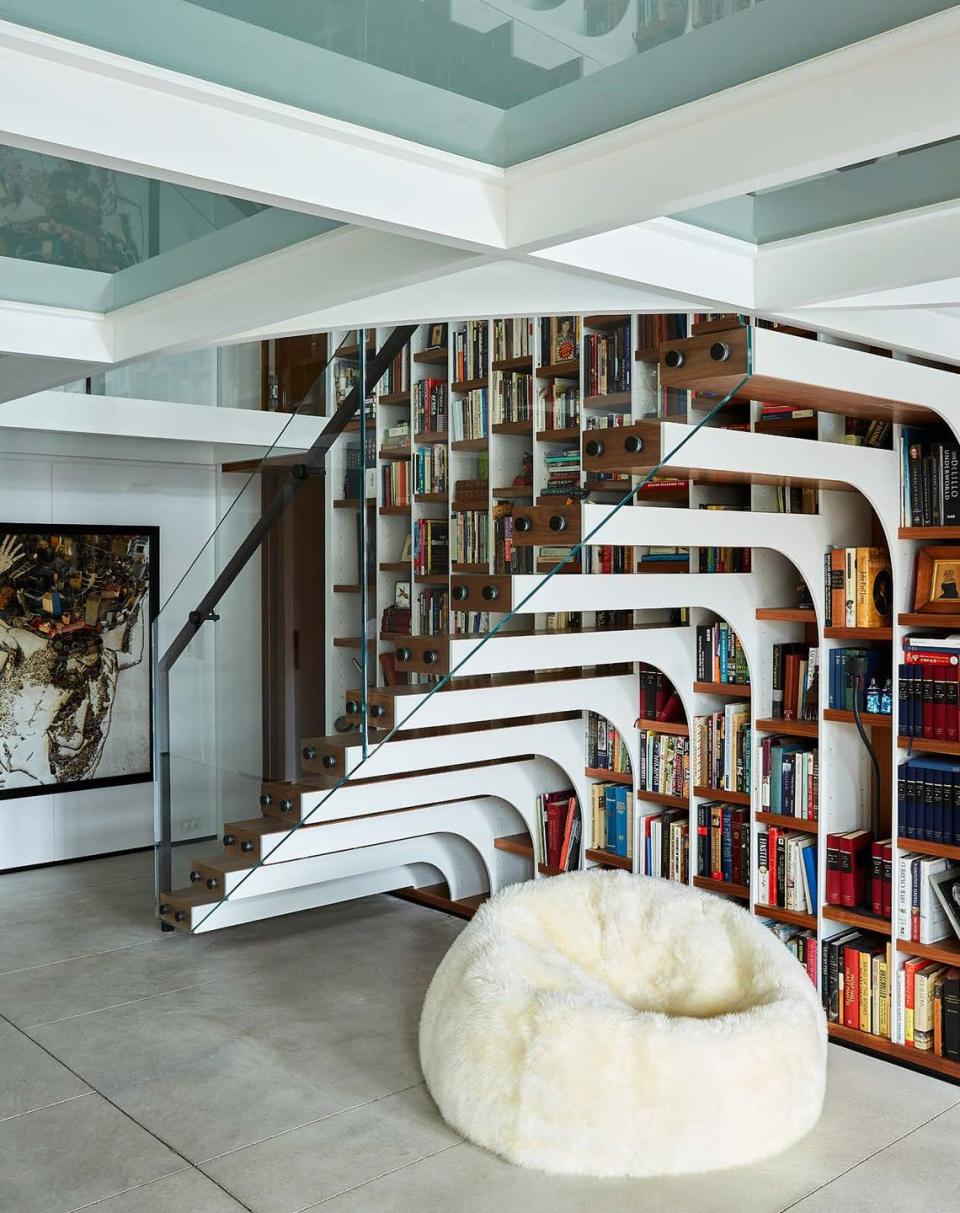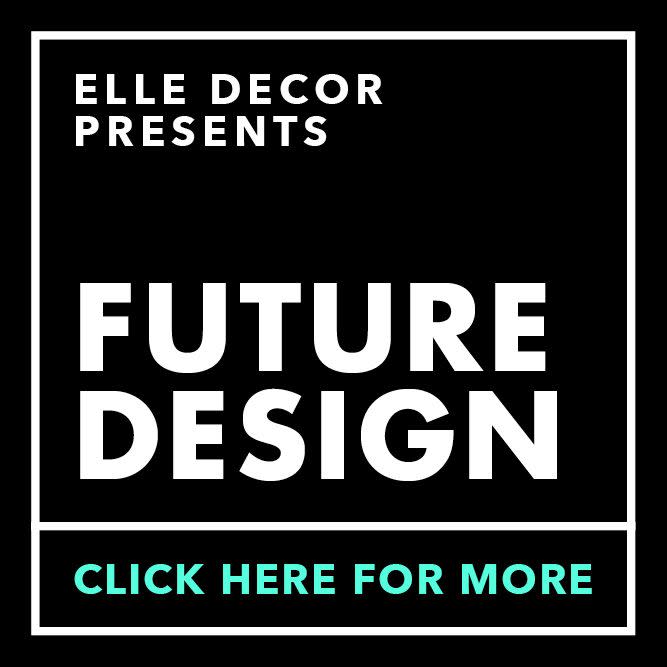See the Bookshelves That Turn Into Stairs...and More in This New York Apartment

Known for their holistic approach to design, Matt Berman and Andrew Kotchen, the founding principals of the New York firm Workshop/APD, transformed a young family’s Greenwich Village apartment into a modernist and light-filled home. Here, Berman and Kotchen reveal the inspiration and goals behind this high-tech project.
ELLE Decor: With its floating staircase and the glass mezzanine that hovers harmoniously over the living area, this apartment feels more state-of-the-art than most.
Matt Berman: We’re constantly inspired by the digital aspects of our lives today, but also by how we can use the latest technology to craft and manipulate materials and forms in our designs. In this project, we took advantage of this in a number of ways, including in our design of the structural elements of the stairway, the vertical library, and the mezzanine. We used structural software to minimize the size of the steel components, which was integral to the success of the installation.
Are there other high-tech components here that aren’t necessarily visible?
MB: In the master bathroom, we used switch-light glass for the shower walls—these can create privacy without distracting from the space’s elegant, modern aesthetic.
Andrew Kotchen: The goal is always to make the technology invisible, which was the case in this home. The lighting and shade systems are from Lutron Homeworks, and everything, including the lighting, shades, speakers, and heating and cooling systems, can be controlled through an app-based Savant system. We want home automation—shades, glass, lights, music, TV, sound, and more—to be blind, seamless, and intuitive. And of course, these systems are always changing, so they need to be integrated in a way that has minimal impact on the design of the space.

In such a modernist space, how did you warm up the interiors?
MB: The architecture of the home has a clean, modern feel, which is balanced by the curated and collected decor. Each piece of furniture has a shape, material, texture, and color that complements and softens the architectural elements. In seeking out materials that have a crafted feel—whether they are made or manipulated by hand or by technology—designs become warmer and more personal and compelling.
What were some of the more challenging elements that you incorporated into this apartment?
AK: The integration and operation of several large door panels around the kitchen was a real challenge. We wanted the ability to conceal the kitchen space, but we didn’t want the door panels to be noticeable. The result is a set of sliding and hinged planes that are about 15 feet tall and fully integrated into the walls and millwork.

Back to that gorgeous mezzanine and staircase—what was the inspiration behind them?
AK: The geometry of the mezzanine was intended to create a fluid visual connection between the spaces. The intersecting curves were inspired by the idea of a floating bird’s nest. For the stair design, the goal was to minimize material and form. By creating a series of steel fins across the library and extending the vertical dividers of the bookshelves to form the stair treads and structure of the mezzanine above, we were able to integrate the structure for the stairs in a uniquely dynamic, streamlined way. Creating a fluid circulation through a New York City apartment can pose unique challenges. In this home, we kept to a simple palette of materials that helped to define the transitional areas between rooms. This holistic approach to design has been an aspect of our work that ties all of our projects together.

What were some of your key goals while designing this space?
MB: The way the homeowners and their friends, family, and guests would use and experience the apartment was of course top of mind in the design process. By creating public and private spaces separated by transitional areas, it is both family-friendly and yet ready for any use, including frequent entertaining.

AK: Our goal was to provide the owners with opportunities to display and curate their stunning collection of books and objets. We also wanted to create a home that flowed seamlessly from one room into another, while embedding the design with a sense of craft.
Is there anything in particular you learned while designing this apartment that you’ll put to good use in future homes?
AK: Each project serves as a stepping stone for the next one, which is one of the things that makes this profession so rewarding. This apartment allowed us to study and test out the structural composition of form in a unique way, which is work we have already carried forward into many of our recent projects.
You Might Also Like

